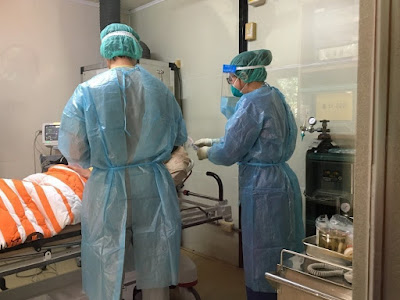5 things you should know about influenza-like virus and asymptomatic prevention
There are more and more confirmed cases of pneumonia in Wuhan. According to the latest WHO's latest top ten symptoms, the first three are fever, dry cough, burnout, and colds and flu are very similar. We must be more alert to such devious viruses in epidemic prevention or self-protection. In the end, what new crown virus information do we need to know to prevent this changing virus.
1.
There are coughs and fever in the beginning
Wuhan pneumonia is a coronavirus infection, mainly the respiratory tract infection, so the symptoms are similar to the flu. Even doctors must be very cautious. In the past, travel history was used as the high standard for screening. Huang Limin, chairman of the Medical Association, admitted that "it's hard to tell, even for doctors."
WHO announces 10 major symptoms of patients with new crown virus:
Fever 87.9%
Dry cough 67.7%
Burnout 38.1%
33.4% with sputum
Shortness of breath 18.6%
Muscle or joint pain 14.8%
Sore throat 13.9%
Headache 13.6%
Cold 11.4%
Nausea or vomiting 5%
Symptoms are similar to flu, but according to a joint paper published by Chinese expert Zhong Nanshan and 37 other medical experts, a retrospective study was conducted in the past. It was found that the incubation period of the new coronavirus was as short as 1 day and as long as 24 days.
The results also show that the new crown virus can be transmitted by family infection, asymptomatic infection, and the existence of "super communicators" is not excluded.
2.
Some cases will have diarrhea
According to Lu Media's "Xinhua News Agency" report, it has also been clinically found that patients with coronavirus only have symptoms of diarrhea, and viral nucleic acids have been found in patients' stools.
The first patient diagnosed with the new coronavirus in the U.S. also had diarrhea for two days. The medical journal The Lancet also recorded similar cases in China, although they were rare.
The newly published report of the Journal of the American Medical Association also mentioned that of the 138 patients surveyed in a hospital in Wuhan, Hubei Province, 14 of them had diarrhea and nausea for the first time one to two days before fever and difficulty breathing. About 10%.
Therefore, Dr. He Xuegong, a Hong Kong specialist in child immunity and infectious diseases, once reminded: "Diarrhea may be a secondary transmission of this virus. Foam or aerosols will be stimulated when flushing toilets. You should cover the toilet seat and the handle of the toilet is also virus Spread high-risk routes and wash your hands immediately after use. "
3.
Asymptomatic patients are also contagious
There have been many asymptomatic patients around the world. Although the body is not uncomfortable, the body still carries the virus. The first asymptomatic patient appeared in Taiwan on February 9. The amount of virus in the body is quite high, and it may just be asymptomatic.
A research team led by Hirohiro Nishiura, a professor of infectious diseases at Hokkaido University in Japan, points out that at least 1 out of 2 patients is infected with the virus from asymptomatic patients, and it is estimated that at least half of the patients are infected by patients without symptoms .
Such asymptomatic patients are more difficult in epidemic prevention. The public should avoid entering and leaving large-scale assemblies or crowded places, and should be exposed to high-risk environments, such as public transportation.
New crown virus attacks various organs throughout the body
According to the National Geographic report, the new coronavirus first appeared in the lungs, and in the early stages of infection, the new coronavirus will quickly invade his lung cells.
4.
When any virus enters your body, if the virus finds compatible receptors on the cells, it will invade. At the outbreak of SARS and MERS, one in four patients developed symptoms of diarrhea, and it is unclear whether the new coronavirus will cause the same problem. However, receptors have been found in patients' lungs and small intestines.
When the human-animal coronavirus spreads from the respiratory system, the liver is generally damaged. Although the damage is usually minor, there are also severe cases in which patients have severe liver damage or even liver failure.
The medical community needs to know more about the extent to which the new coronavirus affects the human body. It is similar to the SARS and MERS syndromes in the past and will cause different degrees of damage to the human lung, liver, kidney, and stomach.
5.
New Crown virus has no antidote or vaccine
The biggest panic among the people is that it is because there is still a proven effective drug for this disease. Although experts from various countries, including Taiwan Academia Sinica, have been developing and researching around the clock.
At present, most experts and scholars have determined that Radixivir may also have an inhibitory effect on the virus of Wuhan Pneumonia. China Research and the National Institute of Health have entered the research and development of Radixilvir, but they have not yet passed the human trial stage.






















1 Comments
n8ce
ReplyDelete